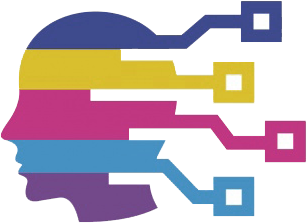The rapid evolution of display technology has ushered in a wave of innovations, revolutionizing how we interact with devices. Among these developments, stretchable OLED (Organic Light Emitting Diode) screens emerge as a game-changing contender. While foldable and bendable screens already offer exciting new applications, LG’s introduction of stretchable OLED panels marks a significant advancement that could reshape interfaces within various sectors, particularly the automotive industry. With the promise of transforming traditional controls into interactive displays, this technology could enhance safety and functionality in vehicles.
Unlocking New Possibilities in Automotive Design
LG’s novel stretchable OLED panel is designed specifically for automotive applications. According to the company, these panels can expand by an impressive 50%, while still maintaining a pixel density of 100 DPI. Although the native pixel density remains undisclosed, it is plausible that it exceeds 100 DPI, effectively transforming with the panel’s stretch. This capability presents a fundamental shift in how controls and displays can coexist in a vehicle’s interior.
The conventional automotive dashboard is cluttered, featuring both physical buttons and separate displays. This often complicates user experience and potentially distracts drivers. LG proposes that their stretchable displays could seamlessly merge these elements, creating a unified interface that enhances user interaction. The concept posits that, with a simple touch, the flat surface of the display could transform, allowing drivers to feel buttons and controls without averting their gaze from the road. This blend of tactile feedback and visual stimuli could improve the safety of drivers, addressing a common criticism of touchscreen-centric vehicle controls that require visual attention.
Practical Applications and Real-World Implications
Consider the implications of such technology beyond the automotive industry. In personal devices, for instance, stretchable OLED panels might be utilized to create flexible smartphones or tablets, enhancing portability and durability. In healthcare, stretchable displays could revolutionize patient monitoring devices, allowing for adaptable interfaces that conform to the needs of both patients and professionals alike. Moreover, in the realm of wearable technology, such displays could lead to innovative adaptations for fitness tracking and health monitoring, where aesthetics and functionality need to coexist harmoniously.
However, the introduction of stretchable OLED technology comes with challenges. While the ability to extend and modify screen layouts is compelling, the production costs, durability, and user acceptance of such technology remain questions that need addressing. Consumers often express hesitance when new technological capabilities demand changes in established habits. Bridging this gap requires not just impressive specs but also compelling use cases that showcase tangible improvements in user experience.
The Balance Between Innovation and User Needs
The ongoing debate in the automotive industry surrounding touchscreens versus physical controls presents an intriguing backdrop to LG’s innovation. Critics of touchscreen interfaces argue that their reliance on visual engagement hampers the driving experience, prompting a push for physical controls that emphasize tactile feedback. LG’s stretchable technology proposes a middle ground by allowing users the flexibility to define their preferred controls while still embracing modern touchscreen functionalities. This kind of adaptability could redefine what users expect from automotive interiors, paving the way for greater customization tailored to individual preferences.
Even as stretchable screens promise exciting possibilities, it is crucial to consider the challenges posed by user-centric design. The key to success lies in crafting interfaces that prioritize driver safety and usability without compromising the sleek aesthetics that modern vehicles aspire to embody. It’s a fine balance, one that requires not only cutting-edge technology but a comprehensive understanding of user needs and behaviors.
Limitless Potential for Future Innovations
LG’s stretchable OLED technology represents a tantalizing glimpse into the future of displays. As companies seek to integrate such advancements into everyday technology, the potential applications seem boundless—from interactive automotive dashboards to novel consumer gadgets. While the early adaptations will undoubtedly take time to refine and perfect, the foundation laid by stretchable displays heralds an exciting era of interaction. If done right, this innovation could not only change how we engage with machines but also enhance our overall experiences in diverse environments. The stretchable OLED panel isn’t merely a display; it’s a glimpse into a future where technology becomes increasingly intuitive and adaptable to our needs.

